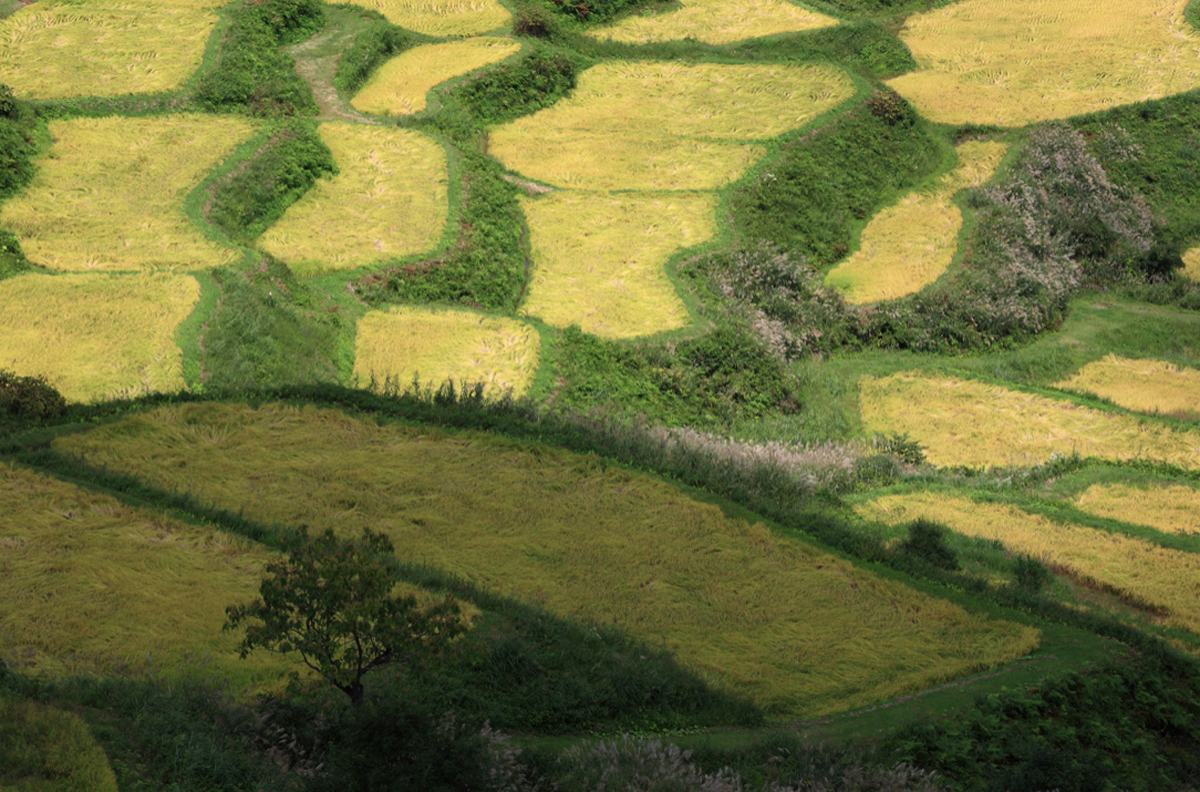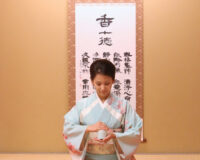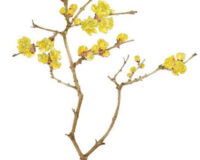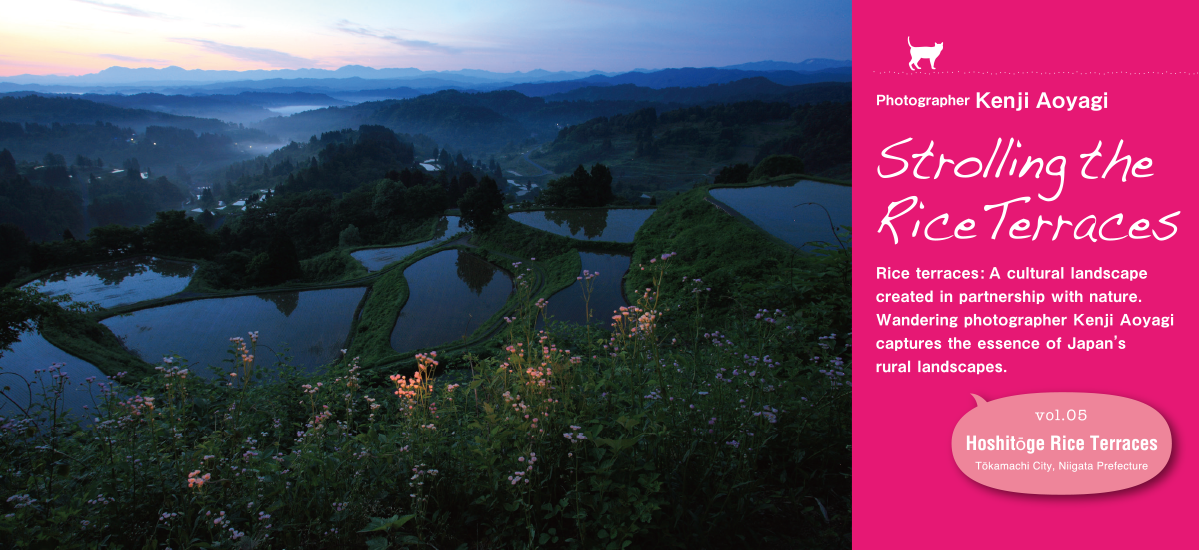
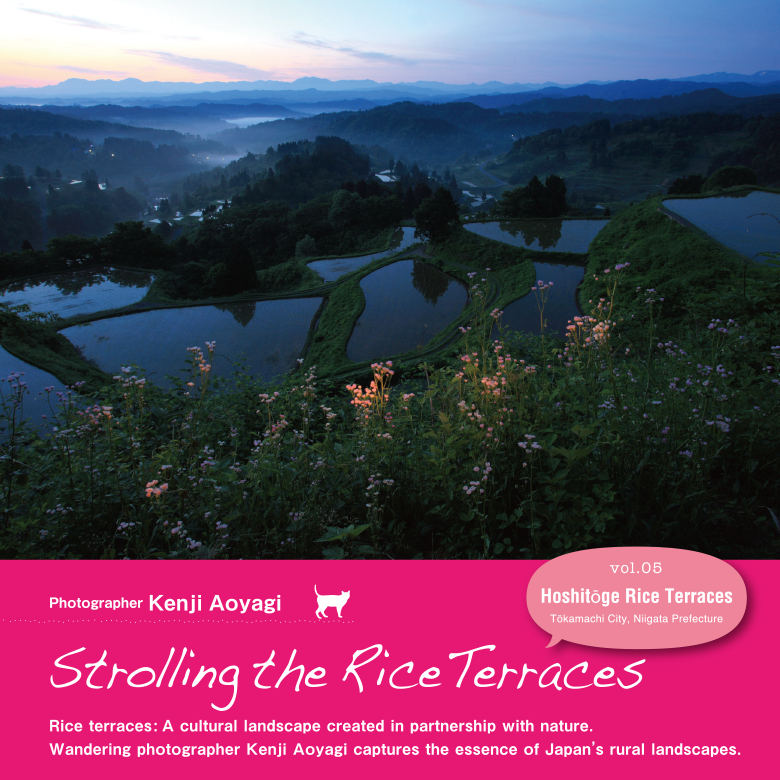
With over five thousand hectares of tanada (rice terraces), Kubiki-kyūryō in Niigata Prefecture is well-known for its terraced hillsides, particularly those of the Tōkamachi area. This area is also renowned for the Echigo-Tsumari Art Triennale, a forward-thinking modern art event first held in 2000 as a means of revitalising a region affected by rural depopulation. The Triennale attracts many thousands of visitors, who come to the see open-air artworks by a range of Japanese and international artists, that dot the rice terraces and fields. One of these is “The Rice Field”, a permanent installation by Russian conceptual artists Ilya and Emilia Kabakov, which can be viewed from the Matsudai Noh Butai Snow-Land Agrarian Culture Centre – the art facility at the centre of this three-yearly event.
Photos and Text : 青柳健二 Kenji Aoyagi / English Version : Judy Evans
Keyword : Rice Terraces / Farming / Horticulture / Niigata Prefecture / Hoshitoge Rice Terraces / Tanada
The Panoramic Hoshitōge Rice Terraces
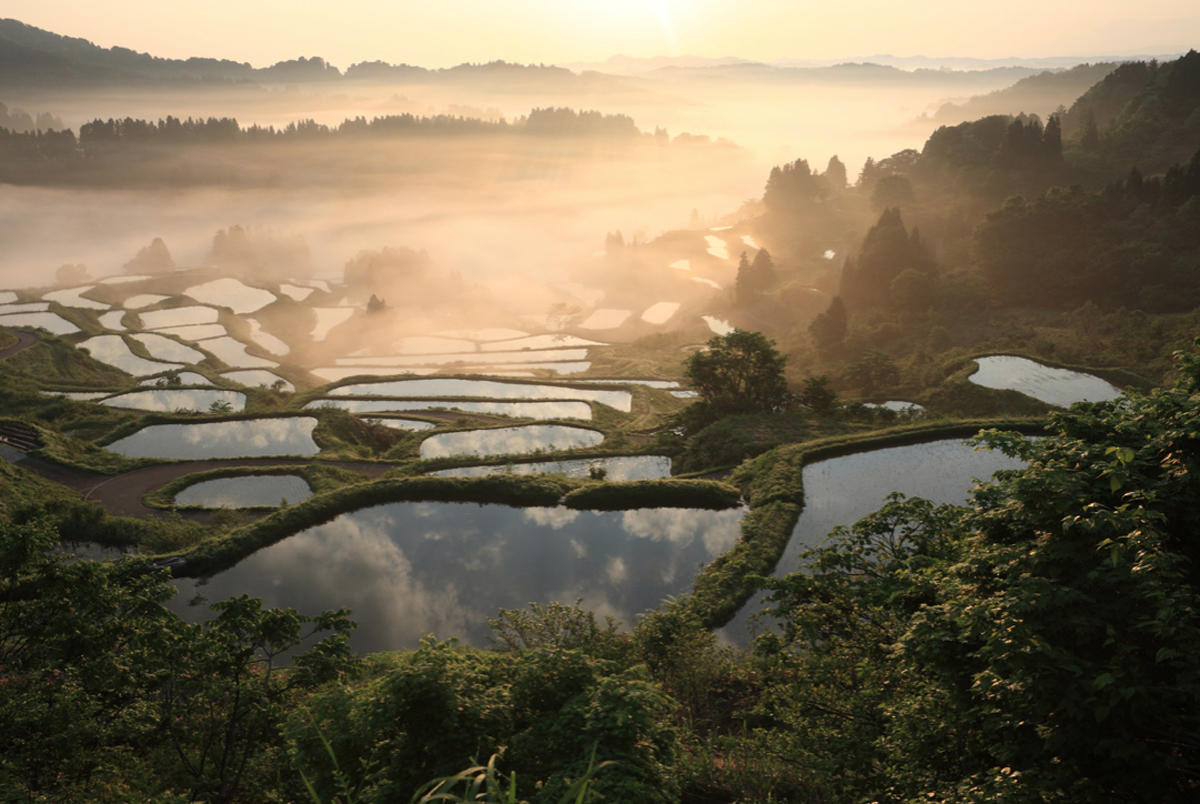
The Echigo-Tsumari Art Field official website states that the overarching concept for its activities is the idea that “humans are part of nature”. Through its regional development initiatives, the Echigo-Tsumari region aims to model ways in which people can relate to the natural environment, with the countryside the stage for artworks that weave together art and nature.
The Triennale has garnered much acclaim, including winning the Furusato Event Grand Prix – Minister of Internal Affairs and Communications Award in 2001, and the Special Prize at the Ministry of the Environment’s 10th Ecotourism Awards in 2015. Dubbed the “Tsumari Method”, this model for regional development has frequently featured in the national and international media.
The most renowned of all these rice terraces has got to be the Hoshitōge Rice Terraces in the Tōkamachi Matsudai area. Despite not being included in the “Japan’s Top 100 Rice Terraces” list, the Hoshitōge Rice Terraces have long been famous among the ranks of Japan’s keen photographers, for the wonderful photography conditions they offer.
In 2017, the Nikkei Shimbun newspaper gathered together a group of ten judges with expertise related to aspects of rice terraces, to select Japan’s top ten most picturesque rice terraces. Out of a list of twenty-nine of the country’s most beautiful rice terraces, which of course included Hoshitōge, the judges (of which I was one) assigned points based on criteria such as the beauty of the panoramic views and the terraces’ photogenic qualities. When all the points were tallied, Hoshitōge came out head and shoulders above the others.
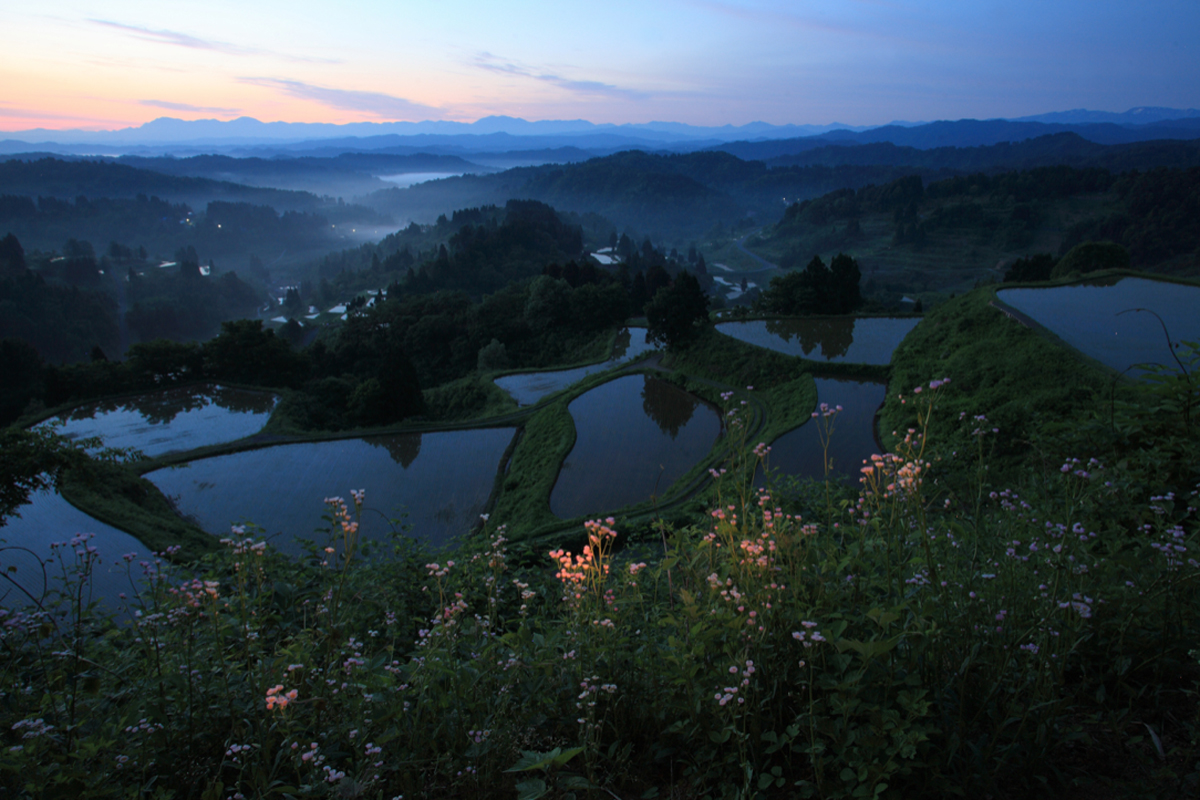
The rankings indicated that it was the sheer breadth and scale of Hoshitōge’s rice terrace scenery, unmarred by blots on the landscape such as visible roads and buildings, that made these rice terraces so beautiful.
Extending over the south and east-facing hillsides, the expansive Hoshitōge Rice Terraces offer stunning sunrise vistas. However, this comes with a catch. Mist and haze tend to envelope the slopes in the early morning, limiting visibility. Nevertheless, the mist seems to generate repeat customers, with visitors wanting to come back again in the hope of encountering the perfect conditions to view the sunrise over the terraces. Apparently this is what also happens at the Yuanyang Rice Terraces in China’s Yunnan province, where the locals say it’s the mist that keeps people coming back.
A local water conservation method of storing rainwater and snowmelt in the rice terraces from autumn through spring has the serendipitous effect of increasing the photogenic qualities of the terraces. Whereas most rice terraces are not filled with water until the spring planting season, at Hoshitōge, unless the fields are covered in snow (which has a special charm of its own) or it’s the summer growing season, they are full of water and appear as a myriad little reflecting ponds descending down the hillside.

Each of the twenty-nine farm houses in the village of Hoshitōge cultivates an area of around two hectares, which is large-scale when it comes to Japanese rice terrace cultivation. Compared to the increasingly common sight of abandoned farmland across Japan, there are very few fields at Hoshitōge that are not under cultivation, meaning that these well-maintained fields are beautiful all year round.
This is the production area of the famous rice brand, Uonuma Koshihikari, renowned throughout Japan. Although part of the harvest is commercially available, it is in high demand with fans and purists, and difficult to obtain.
The Hoshitōge Rice Terraces have gained quite a dedicated fan base of their own. They were the poster child for the 15th National Tanada (Rice Terrace) Summit in 2009, and were used as the opening title background for NHK’s long-running historical drama, Tenchijin (Heart of a Samurai). As Hoshitōge means “Mountain Pass of the Stars”, the terraces even have a beautifully evocative name.
Nowadays these stellar rice terraces attract not only keen photographers but also ordinary tourists, whose numbers grow every year.
